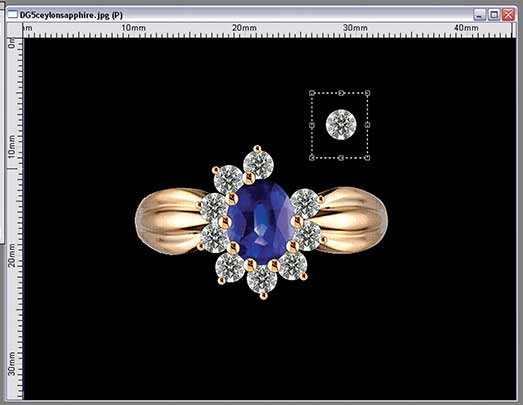|
Technology
Customization Simplified
CAD is indispensible to jewelers these days and CounterSketch makes it easy.
By Shuan Sim
 |
| Customer interacting with CounterSketch. Photo courtesy Gemvision. |
Computer-aided design (CAD) and computer-aided manufacturing (CAM), the use of computer software to control design creation and manufacturing processes, have become mainstays in the jewelry industry. “Whether jewelers realize it or not, they have CAD jewelry in their store,” says Brian Ybarra, CAD/CAM subject matter expert at Stuller, a company providing manufacturing support to jewelers and designers.
However, in order to use CAD services in-store, the staff needs to be instructed on how to use the software. “Typical CAD programs require a week of training and many months of practice to be proficient,” notes Shawn Montgomery, executive director of CAD/CAM services at Stuller. To bridge the gap between technical expertise and jewelers’ desire to offer customized jewelry, Stuller introduced CounterSketch.
The original version of CounterSketch was launched in 2009, a streamlined version of CAD that is easier to work with than typical CAD programs such as Stuller’s Matrix and others. Unlike Matrix, in which designers work from a blank slate, CounterSketch offers rings and other jewelry templates as starting points where the parameters of components could be altered, stacked and customized in a “freehand” mode. When users felt that even CounterSketch was still too technically challenging, in June 2016, Stuller offered CounterSketch in different tiers: CounterSketch Bridal and CounterSketch Plus. In addition, the version offering the original freehand mode was rebranded as CounterSketch Studio.
CounterSketch Bridal focuses only on offering bridal jewelry presets so that a sales associate can alter designs on the fly in front of the customer, while CounterSketch Plus includes fashion jewelry options. “This is great for jewelers who might not have adopted CAD because of the investment in time and money,” Montgomery points out. “They’re great for those who just want to make a sale.”
“With CounterSketch, that’s the game changer — being able to design and render photorealistic jewelry in front of the customer,” Montgomery says. With regular CAD programs, it usually takes 15 minutes to an hour or more for the designer to go into the back of the store to change the design, he adds. Sales associates are able to load up a starting point design and adjust components like stone shape and sizes, shank and prong profiles and even type of metal, to name a few. Prices of the final product are automatically updated as changes are applied, as stone and metal prices, production costs and even markup can be built in ahead of time.
CounterSketch currently has between 2,500 and 3,000 bridal and fashion jewelry model presets, with 20 to 40 models added each month.

|
QUICK HISTORY OF CAD/CAM IN JEWELRY The use of CAD in the jewelry industry began in the 1990s but did not take off until much later. “CAD became a mainstay in the early 2000s,” says Brian Ybarra, CAD/CAM subject matter expert at Stuller. Gemvision, now owned by Stuller, offered a 2-D version of a jewelry customization program called Digital Goldsmith in 1991. In 2001, Gemvision introduced the first version of Matrix. Prior to the availability of CAD in the jewelry industry, jewelers relied on hand drawings as they gathered input from consumers when offering customization services. “Not all consumers can relate to hand drawings though,” says Shawn Montgomery, executive director of CAD/CAM services at Stuller. “The beauty of CAD is its ability to make photorealistic renderings.” |
Montgomery believes that CAD/CAM has changed the way jewelers conduct business. “With CAD and customization, selling more jewelry can be accomplished by owning less inventory,” he says. In a time where consumers want their jewelry to reflect their individuality, they are less likely to buy inventory sitting behind glass cases. “Buying $1 million worth of jewelry and selling $1 million worth of jewelry does not work any more,” he concludes.Article from the Rapaport Magazine - January 2017. To subscribe click here.
|
|